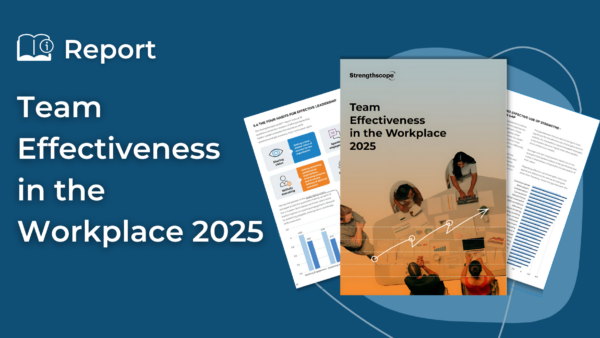The strengths-based approach to talent assessment and development has been used by some of the leading companies around the world for almost two decades now and is becoming one of the fastest growing trends in human resources. In fact, a recent Forbes articles listed strengths-based leadership as one of the fastest growing trends driving business success in 2016.
Despite the strong and growing evidence to support this powerful approach, including increases in employee engagement of up to 70% and improvements in customer service and productivity of around 40%, many people in HR, coaching and training roles still feel their organisations spend the majority of time focusing on weaknesses. Based on a recent poll we ran of 51 HR development and training professionals, only 15% feel their leaders spend the majority of time focusing on strengths when it comes to managing their teams (see diagram below).
There are a number of reasons for this worrying imbalance, including flawed assumptions about what the strengths-based approach to people management involves, lack of effective leadership training in the approach, a failure to embed the approach into daily HR and people practices and overcoming resistance to change. Some of the ways to refocus leaders and the culture of the organisation to focus more on strengths include:
Debunking myths and flawed assumptions about the approach
There are a number of myths and flawed assumptions about the strengths approach that have arisen during the past few decades, mainly arising from a lack of proper training, education and communication about the approach. One of the most common is that many feel the approach ignores weaker areas and therefore is not an effective way to improve performance. However, this is untrue. It actually ensures a more positive, solutions-based conversations about how to reduce and mitigate weaker areas and other risks to peak performance. People are coached to consider creative ways to use their strengths, and those of co-workers, to deal with weaker areas. What we have found is that when people consider weaker areas using a “strengths lens” they engage in creative problem solving and take more ownership for changing their behaviour.
Focusing on strengths also ensures a less threatening conversation, removing fears and defensiveness about talking about weaker areas. One of the underpinning principles of the approach is that we are all ‘spiky’ possessing great strengths and also great vulnerability. We always emphasize this at the outset of a coaching or feedback conversation which encourages people to talk more openly about their weaker area and other risks/blockers to performance.
Training leaders in the strengths approach
In order to change the culture of the organisation to focus more on strengths and positive capacities, leaders need to experience the benefits of the approach first-hand and learn the tools and methods required to translate strengths into success. Our experience suggests that when leaders experience the power of the strengths approach, they typically get excited by it and because it helps them become more self-aware and effective, they are more committed to making it work in their teams.
Embedding strengths-based approaches and tools throughout the entire HR/talent life cycle
Because the strengths-based approach to people management involves a different mindset and way of approaching key HR processes, including hiring, development, performance management and succession planning, it needs to be integrated with these HR processes in order to be fully effective. This is not difficult to do, however, it is necessary to bring about genuine culture change and measurable results.
The strengths approach offers enormous potential over traditional, weakness-based approaches to HR and talent management. However, in order to maximise the potential, HR and talent leaders will need to guide their organisations through a supported change process and resolve outstanding questions and concerns about this approach. As with any change of this nature, one way to de-risk the transition process is for HR decision-makers to encourage leaders at all levels to try it out for themselves and to witness the positive impact on performance, engagement and confidence first hand.
James Brook










